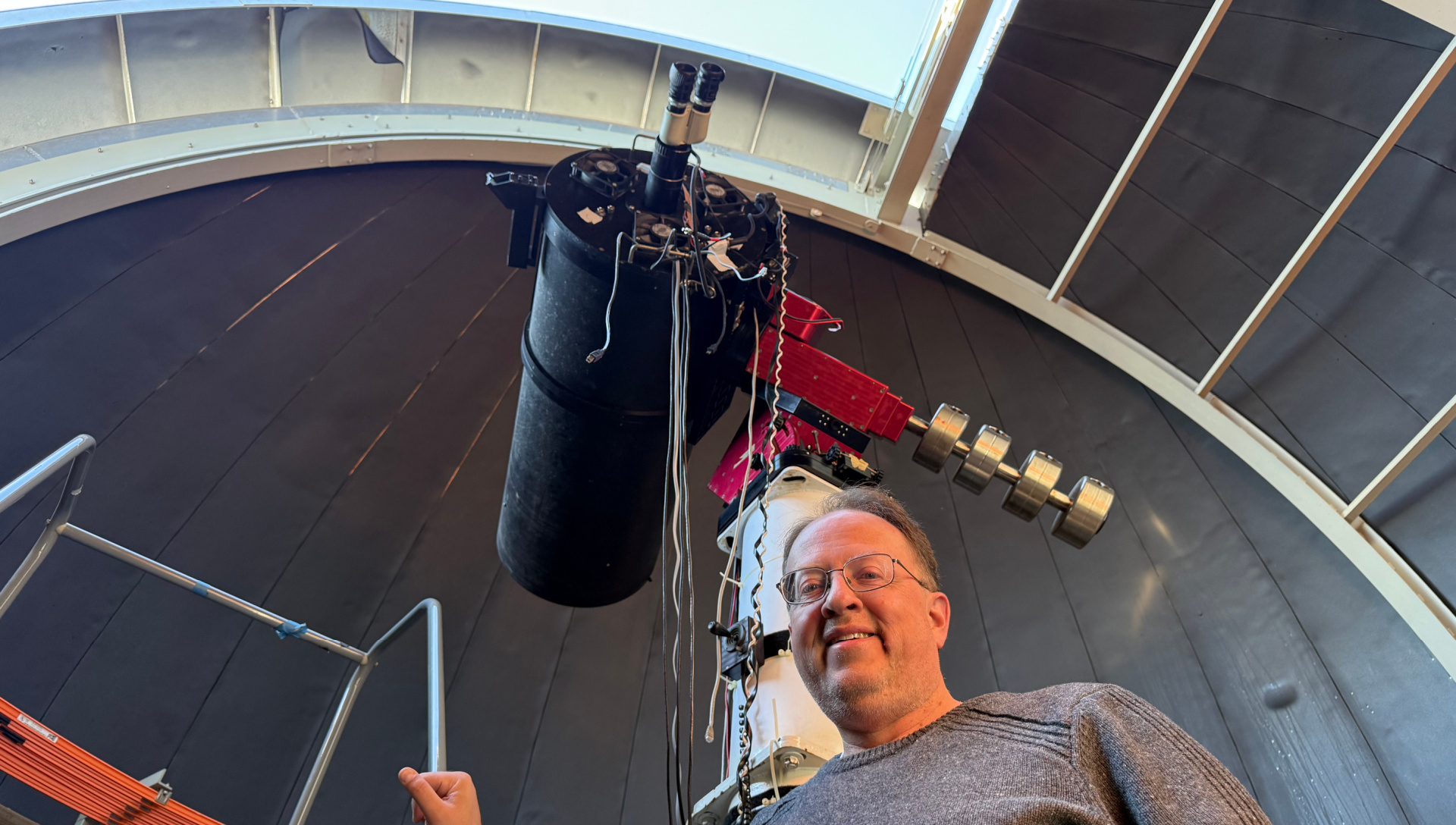
Physics Professor Don Smith will lead a presentation on the vastness of space at the Frank Family Science Center.
Physics professor Don Smith invites the public to look up and wonder at an open house hosted by Guilford College on Saturday.
“We’ll go step by step out into space. And as we go, we build up not just a sense of scale, but why we think that.”
If you’ve ever stared up at the night sky and felt very small, Raymond Binford Professor of Physics Don Smith can relate. He’s built a presentation around that feeling and the centuries-old detective work that lets us measure that vastness.
On Saturday, November 15, the Guilford College Physics Department will host a public open house beginning at 7 pm at the Frank Family Science Center, where Don will present “How Big Is Space — and How Do We Know?” If the weather cooperates, the evening will conclude on the rooftop J. Donald Cline ’78 Observatory with celestial viewing — and if the weather cooperates, a comet or two may be visible.
Over 45 minutes Don will help attendees understand how we figured out the Earth is 7,717.5 miles wide and that the moon is 238,900 miles away.
“We’ll go step by step out into space,” he says. “And as we go, we build up not just a sense of scale, but why we think that.”
What’s striking is how grounded his talk is. For all the mystery of the cosmos, Don starts with the simplest reasoning: shadows and sunlight. “You can look at shadows,” he says, “and figure out how big the Earth is — how long they are at different places and times tells you how big the Earth must be.”
Once you know that, you can keep climbing the cosmic ladder. He says. “You can figure out how far away the Moon is by triangulation,” he explains.
By the time his audience reaches the Milky Way, Don says, “simple geometry demands we’re talking about millions of light years.” The math grows wild, but the logic stays beautifully human: start small, build up.
Even the first Earth measurement, he notes, dates back over 2,000 years. “Eratosthenes figured it out using shadows,” Don says. “Everyone already knew the Earth was round — Columbus actually argued it was smaller than it was. People told him he’d starve before reaching Asia, which he would have if he hadn’t bumped into North America.”
It’s that mix of clarity, humor, and wonder that defines Don’s talks. And for visitors who make it up to the observatory afterward, the night sky becomes a live continuation of the lesson — galaxies, stars, and maybe a comet or two, proving just how far our curiosity can reach.
The event is free and open to the public.

